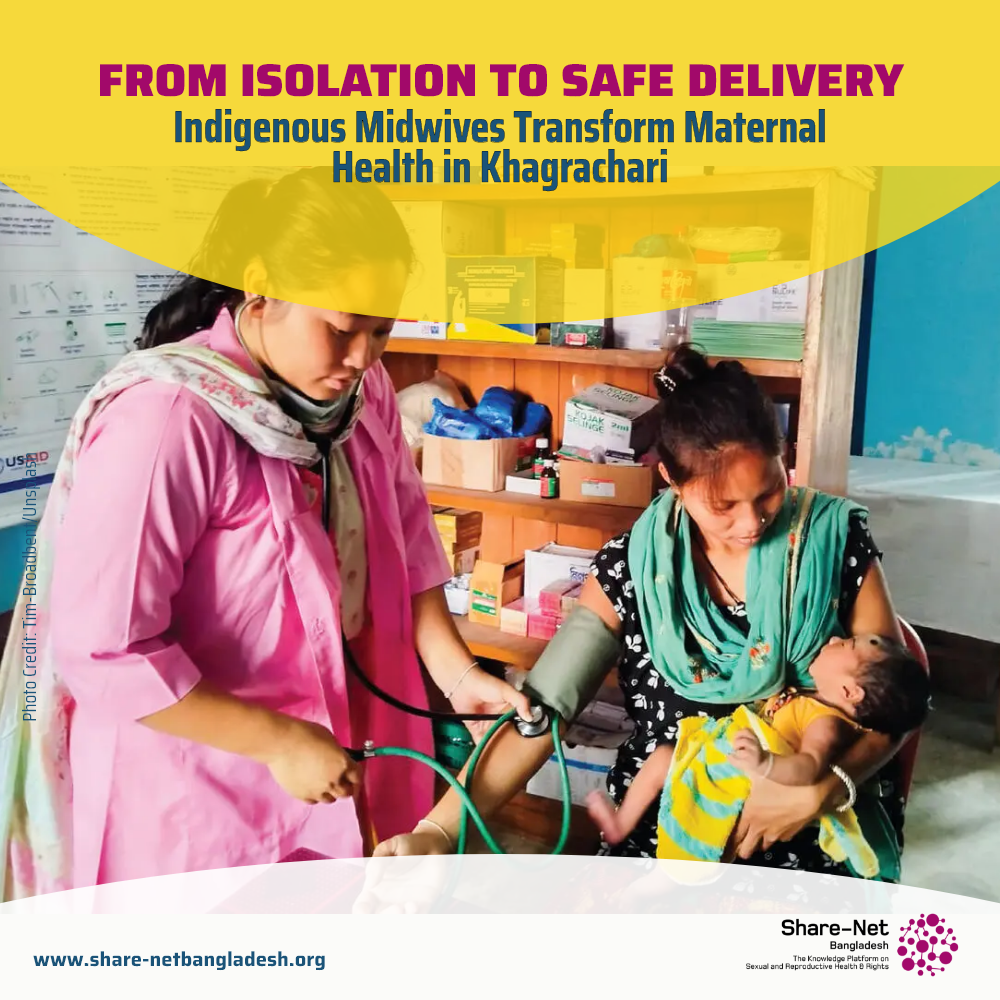From Isolation to Safe Delivery: Indigenous Midwives Transforming Maternal Health Equity in Khagrachari
In the steep, forested hills of Khagrachari’s Keyangghat Union, the act of childbirth has carried high risk—for women like Fatema Akter, giving birth alone at home was accepted as fate:
“I delivered my first baby at home, with no trained help… I had no other choice.”
That narrative has now dramatically shifted. In late 2024, with the deployment of skilled midwives to the Union Health and Family Welfare Centre (UH&FWC), safe maternal care has finally reached this remote indigenous community—ending nearly four decades without a recorded safe delivery.
A Turning Point for SRHR in Khagrachari
This local breakthrough aligns closely with global commitments to Sexual and Reproductive Health and Rights (SRHR). Until the intervention, childbirth in Keyangghat involved long, dangerous journeys—over 40 km on impassable roads, often deferred during rain or nightfall.
Mother after mother depended on untrained attendants, and many births ended in tragedy. Now, thanks to UNFPA’s implementing partner Green Hill and collaboration with the District Family Planning Office, two skilled midwives began serving the 9,000 residents across 23 villages in November 2024.
Since then, the UH&FWC has recorded 14 safe deliveries, conducted over 100 antenatal check‑ups, nearly 500 general consultations, and supported 82 couples with family planning services. For mothers like Fatema and Tushi Chakma, this shift has been lifesaving:
“By the grace of God and with the help of the midwives, my son and I are safe,” and for Tushi—after losing two babies previously—“this place doesn’t feel like a clinic. It feels like family.”
Innovation with Impact
The deployment of midwives recruited from local indigenous communities stood at the heart of the innovation. Their shared language and cultural understanding built trust, allowed respectful care, and conveyed advice in locally accepted ways. The Ministry of Chittagong Hill Tracts Affairs and UNFPA are now investing in midwifery scholarships for indigenous youth, ensuring sustainability across the region.
Within just months, the UH&FWC—after 39 years with zero recorded safe births—helped overturn maternal risks. No maternal or newborn deaths have occurred since services began, according to Rupanta Chakma, District Coordinator for Green Hill. Local leaders and communities now view the midwives as part of the community—empowering maternal health where none existed before.
Context in Bangladesh’s Maternal Health Landscape
Bangladesh has made remarkable progress in maternal health nationally. The maternal mortality ratio (MMR) declined from over 400 per 100,000 live births in 2000 to an estimated 115 per 100,000 in 2023 [1]. Yet, health inequities remain stark—indigenous communities in the Chittagong Hill Tracts historically lag behind the national average [2]. This model addresses that gap directly.
Globally, maternal deaths remain high—around 223 per 100,000 live births in 2020—and 99% occur in low-resource settings. The safe births initiative in Khagrachari thus exemplifies how equitable, community-based SRHR services can deliver measurable improvements even in the most remote settings.
Conclusion
The story from the hills of Khagrachari is more than a health success—it’s a powerful example of inclusive SRHR in practice. Through local midwives, culturally sensitive care, and focused collaboration, a long-silent crisis in maternal health is turning into a story of life, hope, and rights fulfilled. Scaling this model across other underserved unions could accelerate Bangladesh’s journey toward the Sustainable Development Goal of zero preventable maternal deaths—restoring trust in public health systems and empowering communities with reproductive rights long denied.
Source: UNFPA

